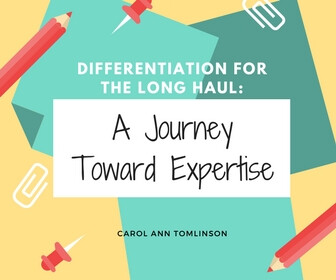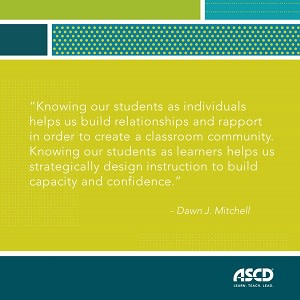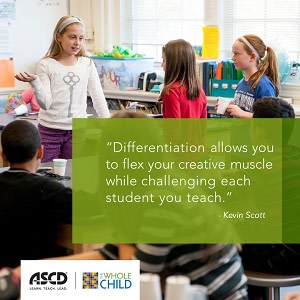Whenever students return physically to school, educators will face a daunting challenge, different from the one that confronted them as they transitioned rapidly to remote learning.
Although students have always had vast differences in content mastery, cognition, social and emotional skillsets, and background, schools have historically papered over those differences. And they’ve gotten away with it because teachers knew that most students had, within reason, sat in their seats and been exposed to the same content—so at least they had a working familiarity with what the class was doing. In large swathes of the country, that assumption will no longer hold. What students have learned and viewed, and which of their abilities have slid backward, will be all over the map. The most vulnerable learners are likely to suffer disproportionately. So there will be a much greater need for differentiation.
Against that backdrop, districts should, to the extent possible, change their instructional models to personalize learning for each student’s distinct needs. Students who are the furthest behind will need the most attention, resources, and support.
Where to Start? Determine Critical Standards
Schools must deliver the support returning students will need, so all students can master core knowledge, skills, and habits to succeed. Understanding the gap between where students are and where they should be is step one.
First, educators must work through which competencies—academic, as well as social and emotional—are most critical for students to have mastered. Not every single academic standard will matter—far from it.
Standards that are prerequisites for future learning and advancement will matter more, for example, as will those that have particular resonance in a community or context.
As the Fordham Institute’s Michael Petrilli notes, in mathematics, given that knowledge and skills tend to build on each other, the standards that students missed from the prior year will generally matter, regardless of the age of the student. (For a deeper view into how concepts build across mathematics and which concepts matter for which subjects, consult the Teach to One Math Major Concepts Map, which diagrams how concepts taught in different grade levels connect to each other).
For older students working in subjects like social studies, English language arts, or science, concepts tend not to build on each other nearly as much, but literacy ability does depend on having a broad knowledge base. Districts should use their judgment about which prior-year standards are most critical.
For students below Grade 3, building up skillsets in reading—making sure they have mastered critical knowledge and skills in the areas of phonological awareness, phonics, automaticity and fluency, certain vocabulary, and comprehension—will be vital.
Step Two: Assess Where Students Are
Given that understanding students’ current state will be vital to making sure they get what they need, the next step will involve figuring out how to assess where students are on the critical competencies.
Schools may choose to use norm- or criterion-referenced benchmark assessments like those by NWEA MAP, Curriculum Associates’ iReady, or Renaissance Learning’s STAR for subjects where there is coverage, like math, English language arts, and some science grade levels, for example. This will typically involve setting aside 45 to 75 minutes for students to take the adaptive assessments, which will pinpoint where students are in their subject-matter knowledge. Schools with seven-period days should rearrange the schedule some time in the first few weeks of school after they’ve welcomed students back and established a positive culture in the building—vital given the trauma some students have likely endured during the pandemic and onset of recession—to ensure there is a block of time for these assessments. Although norm- and criterion- measures of growth each capture important phenomenon, at this particular stage it’s less important to understand growth than to get a snapshot of where students are and any gaps. Although many schools already use these benchmarks, what’s different here is using them not to group students, but to pinpoint where their gaps are, so schools can develop personalized-learning plans with each student.
In other cases, schools may rely on new, more experimental providers like Validated Learning (full disclosure: I’m an advisor to the company) to provide valid, reliable, customizable assessments. Validated Learning allows teachers to use assessment items in its assessment bank, as well as create their own items to add to that bank. The company then leverages artificial intelligence to compare the teacher-added items with other pre-validated assessment items to see if the teacher-generated ones are valid and reliable for the standard in question.
Districts may also dip their toes into the variety of innovative formative, contextual, and portfolio-based type assessments that have begun to spring up. Like Validated Learning, these assessments are new and less proven, but they may provide districts more choices and customization, especially for subjects outside the scope of benchmark assessments or for areas where teachers would like to gain a richer picture of students’ ability than a traditional assessment vehicle can provide. Offerings from companies like FreshGrade could be particularly helpful here. Other districts may rely on adaptive assessments embedded in curriculum products, like those from Lexia Learning or Dreambox Learning, which can pinpoint students’ knowledge and skills.
Finally, districts might draw upon assessment techniques from higher education competency-based stalwart Western Governors University or the Virtual Learning Academy Charter School in New Hampshire—particularly for skills that don’t fall into the category of math and reading—and have teachers assess student work through watching them do performance-based tasks or leveraging brief oral assessments. Districts that take this approach would ideally have two teachers assess some student work so they can develop interrater reliability between classrooms and schools. Given that this will be challenging to set up on the fly, districts could look to companies like The Graide Network to help create assessment systems. But you don’t need to overcomplicate it: Most teachers will know if a student has mastered a given competency after a 5-to-10-minute conversation about it—and that may be plenty good enough considering time and resources.
Document Learning and Track the Gaps
Schools should document what they learn in platforms like MasteryTrack that can display students’ real-time progress. Such tools will be vital for teachers to personalize learning for each student, but also for parents to understand where their children truly are against the competencies that matter. Tools that show whether a student has in fact mastered a learning objective can provide answers better than the pass-fail grading schema that dominated the spring and created more opacity than sunlight for students and families. Using the current moment to escape traditional grading practices and move to a mastery-based framework of learning—in which time is variable and learning is constant—makes far more sense.
From there, schools will have a clear sense of where students are and how far each student and the district as a whole must travel. Districts should then set goals across the different domains to build a true north for the work ahead.
Redesign for Personalization!
With a school wide team in place, schools should then begin redesigning the student experience. They should, if possible, scrap the structures of time, space, and resources in the school day that were in use before COVID-19—everything from how many periods of instruction there were to how classroom assignments were made—to reimagine what schooling might be. Schools now have a chance to move away from our seat-time-based education model. Instead of focusing on the minutes students sit in seats, let’s ask whether each student is mastering meaningful competencies. Let’s acknowledge that all students don’t take the same amount of time to master concepts; some will need several days, and others will require less time or may have already learned the concept outside of school.
In place of traditional structures, let’s use online resources to help us create a more flexible, personalized system. Now’s the time to leverage technology to try various blended-learning arrangements—learn more about different models of blended learning here—that allow each student to learn at his or her own pace and develop more agency—and that will help us close the learning gaps that will surface when schools reopen.
About the author
Michael B. Horn is a senior strategist for Guild Education and a distinguished fellow at the Clayton Christensen Institute for Disruptive Innovation.








